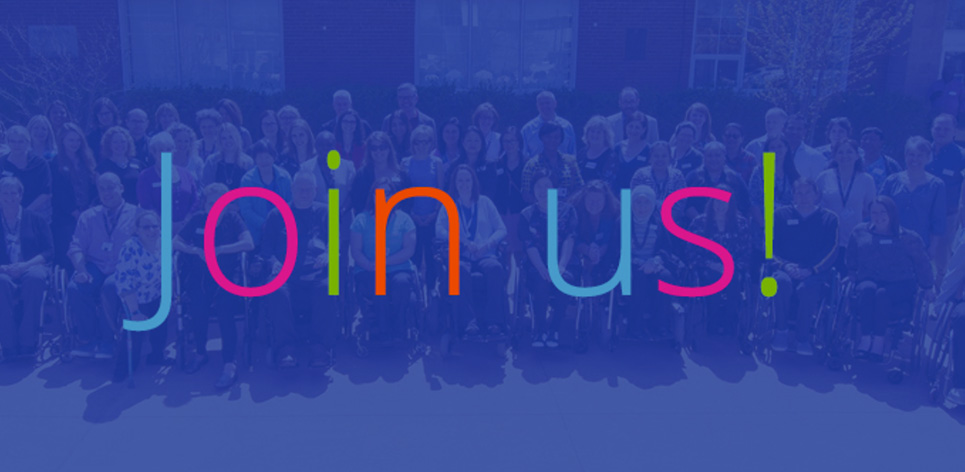Financial health
Right on the money
No matter what your goals or circumstance, financial literacy is a crucial life skill. As the cost of living rises in both rural and urban areas in Ontario, it’s important to plan wisely and deliberately for a full, independent life. And, when you have a spinal cord injury or other disability, the need is even greater, as earning can be delayed or compromised. By exploring your options, gaining relevant knowledge and skills, you’ll build a stronger financial landscape. We are proud to partner with Meridian Credit Union to provide you with expert information and resources.
Banking when living with a disability
A disability can often increase your expenses and lower your income.
Low-cost or no-cost banking
You may be eligible for a bank account with no or low monthly fees. Low-cost accounts have a maximum of $4 per month in banking fees. No-cost accounts are available to people who are registered disability savings plan beneficiaries.
Find out where you can get a no-cost or low-cost bank account.
Using banking services to manage your money
When you’re living with a disability, you may find it easier to manage your money if you:
- get your benefits deposited directly into your bank account
- set up pre-authorized debits to pay your regular bills
- make payments using online or mobile banking
Ask your financial institution about other ways to help you manage your money. Check if there is a fee for these services.
Make a budget and manage your debt
You may have a limited income when living with a disability. Create a budget to make sure you have enough money to:
- pay for household expenses
- pay your bills
- make loan payments
- save for future needs
Use the Budget Planner to help you create and manage your budget.
Manage your debts
It may be difficult to make payments on your debts when living with a disability.
Try and make at least the minimum payments on your debts. If you don’t make the minimum payments, it could hurt your credit history.
Find out how to manage your debt.
Save using a registered disability savings plan
A registered disability savings plan (RDSP) is a savings account for people with severe and prolonged disabilities. It’s registered with the federal government.
Here are some things you should know about RDSPs:
- you may be eligible for grants and bonds to help you save in an RDSP
- you can hold investments in an RDSP
- the money earned from investments in an RDSP isn’t taxed until you withdraw it
Learn more about registered disability savings plans.
Canada Disability Savings Grant
When you or another person contribute to a registered disability savings plan (RDSP), you can apply for the Canada Disability Savings Grant. The grant adds money to your RDSP. The amount depends on how much you contribute and your family income.
The grant money must stay in your RDSP for 10 years before you can withdraw it. If you withdraw it early, you must pay some of it back.
Learn about the Canada Disability Savings Grant.
Canada Disability Savings Bond
You may be eligible for a Canada Disability Savings Bond if you have a low income. The bond adds money to your registered disability savings plan (RDSP). You don’t have to contribute to your RDSP to get the bond. The bond may add up to $1,000 per year to your RDSP, up to a maximum of $20,000 in payments during your lifetime. You can get the bond until the year you turn 49 years old.
Find out if you’re eligible to get a Canada Disability Savings Bond.
Payments from your registered disability savings plan
The payments you get from a registered disability savings plan (RDSP) don’t affect your eligibility for Government of Canada benefits.
These benefits include:
- Old Age Security
- Guaranteed Income Supplement
- Canada child tax benefit
Provinces and territories may include part of your RDSP payments when determining if you’re eligible for provincial or territorial benefits.
Contact your province or territory to learn if they include RDSP payments when calculating benefits.
Source – Financial Consumer Agency
Partners in Financial Health
At Meridian, we’re focused on driving Community resilience – among our Members, our employees, and the communities in which we live. We achieve this using a variety of tools, including investments in leading Community partners, employee donation matching, and facilitating employee volunteering.
Here’s how we’re approaching this important work:
- Perspective: we invest in Thought Leadership, partnering with organizations striving to overcome the key challenges facing our communities, now and in the future. Investing in this research positions Meridian to support the next generation of Community change-makers.
- Planning: we invest in organizations that develop programming and share best-practices rooted in the latest research. This allows us to scale our impact, empowering organizations to broaden their reach and touch more lives.
- Preparation: finally, we invest in organizations delivering programs and services directly to the community. From supporting community food centres to enabling the delivery of financial literacy workshops, Meridian is there to support Canadian change makers wherever they’re making a difference.
To learn more, please visit us at www.meridiancu.ca/ready-for-what-if





